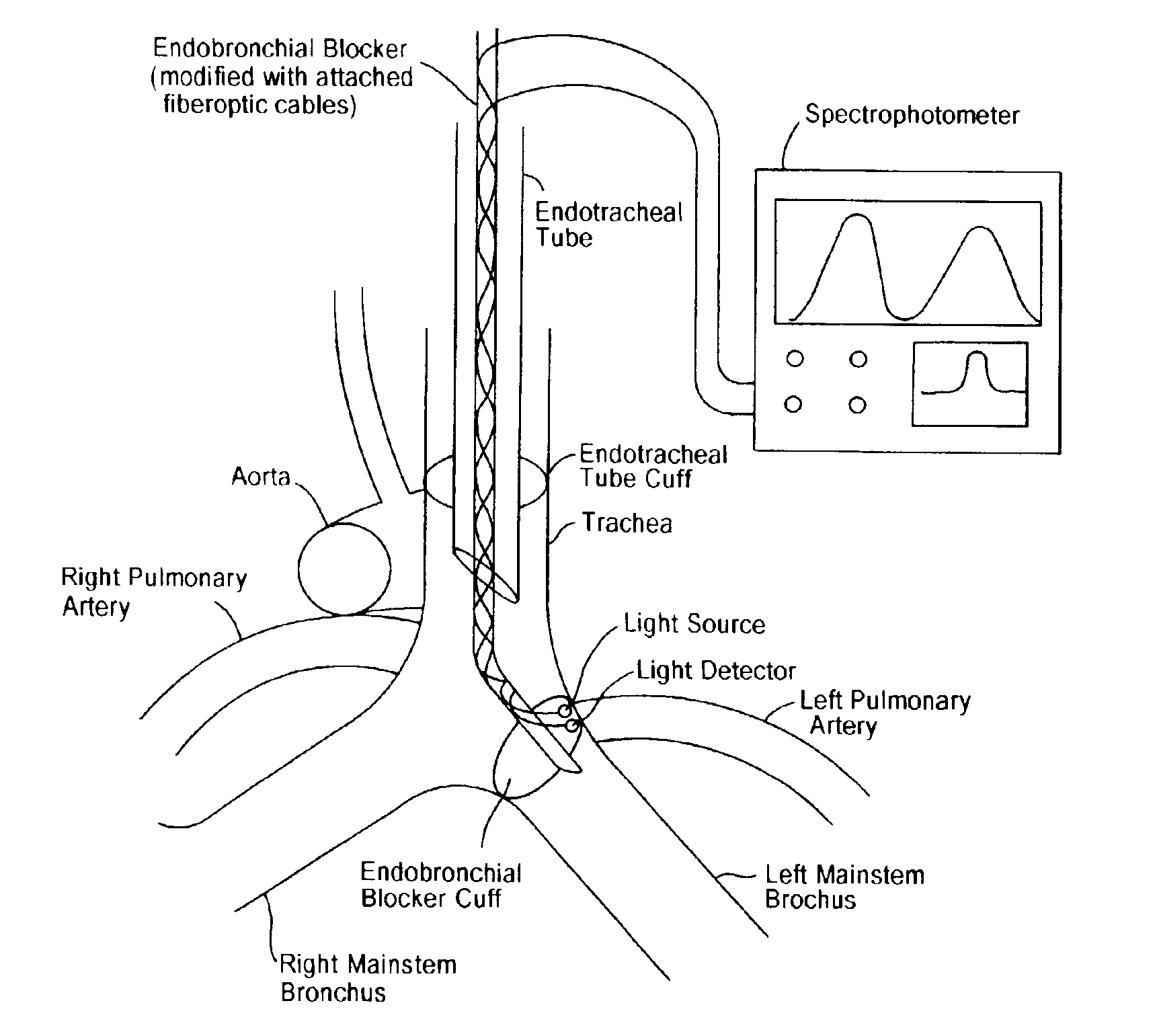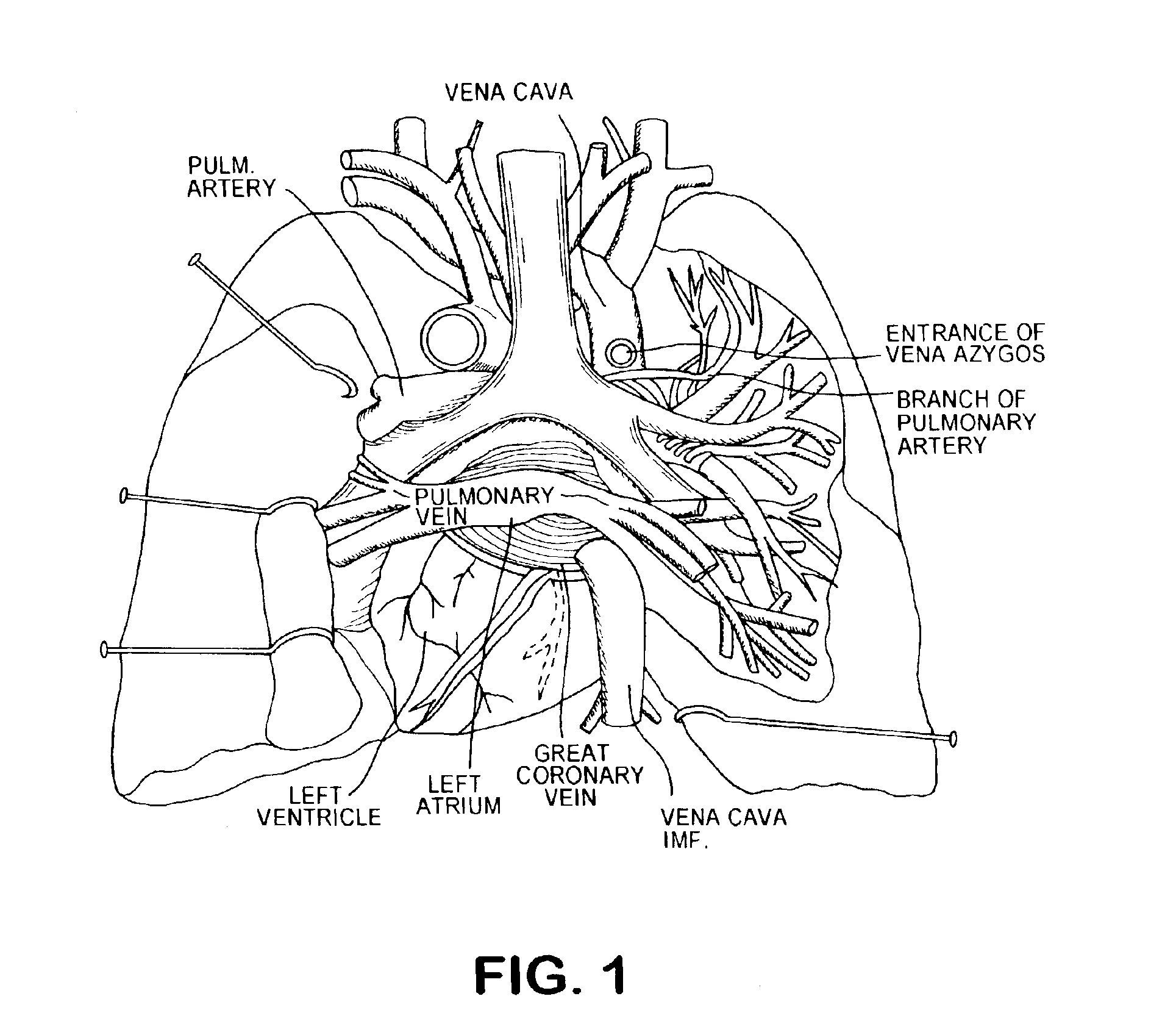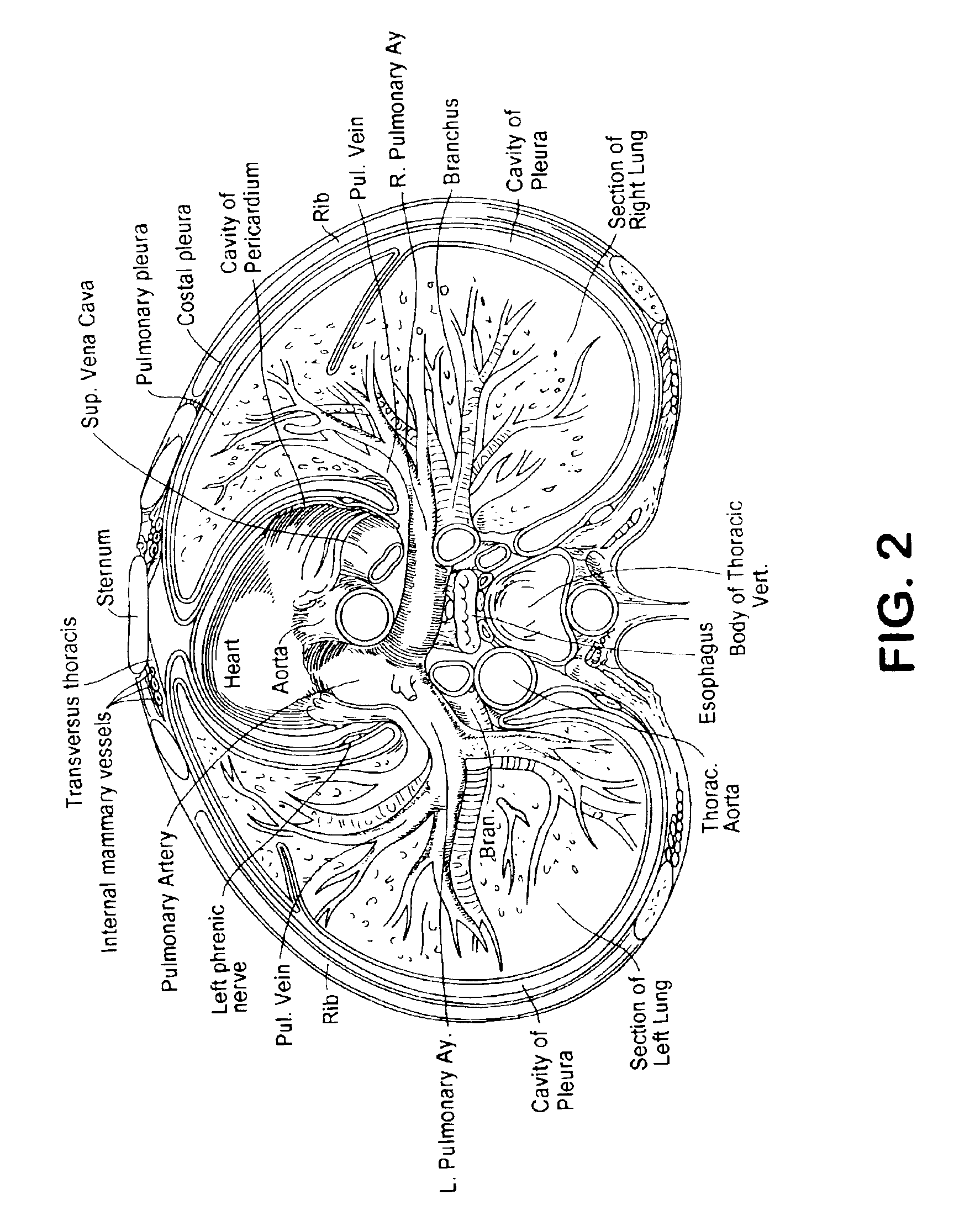Transbronchial reflectance oximetric measurement of mixed venous oxygen saturation, and device therefor
a technology of oximetric measurement and reflectance, which is applied in the field of transbronchial oximetric measurement, can solve the problems of not being able to measure the oxygen saturation of mixed veins, not having a continuous noninvasive measurement technique available, and not having a pulmonary artery catheter placed
- Summary
- Abstract
- Description
- Claims
- Application Information
AI Technical Summary
Benefits of technology
Problems solved by technology
Method used
Image
Examples
example 1
Determining Pulmonary Artery Saturation Using Reflectance Near-Infrared Spectroscopy in an Ex-Vivo En-Bloc Preparation.
[0023]Fresh cadaveric samples of the right pulmonary artery, anatomically associated with the right bronchus, from sheep are obtained. A fiber-optic probe is inserted into the right bronchus through an incision on the wall opposite the pulmonary artery, and advanced until it is in contact with the mucosa of the bronchus directly adjacent to the pulmonary artery (FIG. 1 and FIG. 2). Heparinized blood (e.g., sheep blood) is circulated through the pulmonary artery segment via a pump at varying flow rates, while temperature is held constant at 37° C.
[0024]The saturation of the blood is changed by bubbling varying concentrations of humidified oxygen and nitrogen gas through it. The effect of hemoglobin concentration ([Hb]) is determined by dilution of the blood with saline. When the blood is sampled, the reference values of saturation and [Hb] are determined using a co-o...
example 2
Determining Pulmonary Artery Saturation Using Reflectance Near-Infrared Spectroscopy In-Vivo.
[0025]The thorax of a sheep is entered via median sternotomy. The right bronchus and adjacent pulmonary artery are dissected. As in the ex-vivo experiment in Example 1, a fiber-optic probe is inserted into the right bronchus through an incision on the wall opposite the pulmonary artery, and advanced until it is in contact with the mucosa of the bronchus directly adjacent to the pulmonary artery (see FIG. 3). The opening in the bronchus is closed with a purse string suture and ventilation of both lungs is continued. A pulmonary artery catheter is placed and blood is sampled for reference measurements of saturation and [Hb] using a co-oximeter. Hemoglobin concentration is varied in vivo by exsanguination, while arterial oxygen saturation is changed by varying the concentration of oxygen in the fresh, incoming gas flow mixture.
[0026]By rearranging the Fick equation as follows, one can see that ...
example 3
Measurements in Human Subjects.
[0029]Subject Recruitment and Selection. Subjects are to be selected based on their anticipated surgery and intraoperative monitoring. The bulk of patients are selected from the cardiac surgery schedule, while others will be selected amongst the general surgery population. Only patients receiving a standard single lumen endotracheal tube, and a pulmonary artery catheter, will participate in the study. Thus, it is anticipated that many of these patients are getting elective coronary artery bypass graft procedures and large intra-abdominal procedures (i.e., Whipple's surgery for pancreatic mass).
[0030]Data is collected from at least 50 patients over a 6-month period, without inducements to participate in the study. All of the patients undergoing scheduled, elective surgery will have their charts examined the day prior to surgery. When it is anticipated that an embodiment of the present invention is being placed, the attending surgeon will be notified. Pr...
PUM
 Login to View More
Login to View More Abstract
Description
Claims
Application Information
 Login to View More
Login to View More - R&D
- Intellectual Property
- Life Sciences
- Materials
- Tech Scout
- Unparalleled Data Quality
- Higher Quality Content
- 60% Fewer Hallucinations
Browse by: Latest US Patents, China's latest patents, Technical Efficacy Thesaurus, Application Domain, Technology Topic, Popular Technical Reports.
© 2025 PatSnap. All rights reserved.Legal|Privacy policy|Modern Slavery Act Transparency Statement|Sitemap|About US| Contact US: help@patsnap.com



